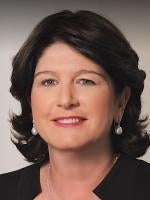CREW Miami’s May Luncheon focused on important new trends in the Miami hospitality industry, all stemming from Miami’s ascent as a global destination. Guest speakers included Max Comess, Director at HFF; Gina Goodin, Associate Vice President of RTKL & Associates; Thomas Meding, Area General Manager of SBE Hotel Group; and Wendy Kallergis, President & CEO of Greater Miami and The Beaches Hotel Association.
Max Comess narrated the luncheon and began his presentation by illustrating the contrast between traditional hotel “value-drivers” and recent Miami hotel value-drivers. Hotel investors have traditionally utilized metrics such as revenue per available room (a calculation commonly referred to as “RevPAR” that divides revenue generated by room sales by the number of rooms available) to determine the anticipated profitability of a hotel investment. Comess explained that Miami hotel investors are now looking to other value-drivers such as “ancillary income” and “intrinsic value” to determine the desirability of a Miami hotel investment.
The ancillary value of a Miami hotel investment is realized through revenue streams generated by the hotel’s restaurant, spa, lounge, bar or nightclub. Anyone who has spent a night out on South Beach can attest to Miami’s vibrant hotel nightlife. As Thomas Meding put it, “just because a visitor does not stay at SLS South Beach does not mean they won’t come to Hyde for a drink.” Tucked behind the SBE managed SLS South Beach, Hyde is one of the most exclusive and chic lounges in Miami.
Investors capture the intrinsic value of their Miami hotel investment through client perception–opening a hotel in Miami brings clout to a brand’s other locations across the globe. The panelists agreed that hotel brands without a Miami location may not be taken seriously. Comess reminded the crowd,
“We are now an international city compared to London, Hong Kong and Dubai.”
It is likely this intrinsic value analysis caused Tommy Hilfiger to choose Miami as a launching pad for his soon-to-be-national hotel brand, the Raleigh.
In fact, cities across the nation that have decided they cannot “beat” Miami have decided to join us. Gina Goodin, known as the “go-to” person for hospitality interior design, explained that hotels around the country have been asking her to give them a “South Beach Vibe.” Goodin noted that Miamians are widely considered trendsetters in the hospitality industry.
So, with an ever-increasing desire to launch a Miami hotel location, is it too late? Has the Miami hospitality industry become oversaturated? Comess tells us it has not, explaining that the opening of a new hotel in Miami does not take a proverbial slice out of the pie, but instead, the new hotel makes the pie larger. As noted earlier, hotels in Miami are much more than a means for lodging–most South Beach hotels offer fine dining and nightlife. The introduction of a new Miami hotel amplifies Miami’s “buzz” and strengthens demand for all participants in the market.
To say the least, we are in the midst of exciting times for the Miami hospitality industry.



 />i
/>i

